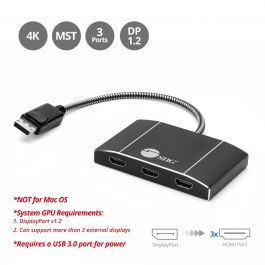Kamikaze01
Regular Contributor
Hi there 
Unfortunately, the topic doesn't fit anywhere else, so I'll post it here under "others".
I have an Nvidia RTX 2080 and all kinds of connections for monitors and TV(s).
I already connected 2 monitors via display port (extended view) for my home-office work, which works perfectly.
But now I also want to connect my large 65 inch 4k TV via HDMI.
This also works, but I have 2 Problems:
1) i have to choose which of the two home-office monitors I want to clone.
For example, if I clone screen 1, but have a window/program open on screen 2, I can no longer see this window/program on the HDMI-connected TV.
2) The resolution for the 65 inch 4k TV is only that of the cheap home-office screen.
Is there a way to use two monitors for home-office in expand view but connect a large TV for gaming WITHOUT the problems mentioned?
Thank you
Unfortunately, the topic doesn't fit anywhere else, so I'll post it here under "others".
I have an Nvidia RTX 2080 and all kinds of connections for monitors and TV(s).
I already connected 2 monitors via display port (extended view) for my home-office work, which works perfectly.
But now I also want to connect my large 65 inch 4k TV via HDMI.
This also works, but I have 2 Problems:
1) i have to choose which of the two home-office monitors I want to clone.
For example, if I clone screen 1, but have a window/program open on screen 2, I can no longer see this window/program on the HDMI-connected TV.
2) The resolution for the 65 inch 4k TV is only that of the cheap home-office screen.
Is there a way to use two monitors for home-office in expand view but connect a large TV for gaming WITHOUT the problems mentioned?
Thank you


